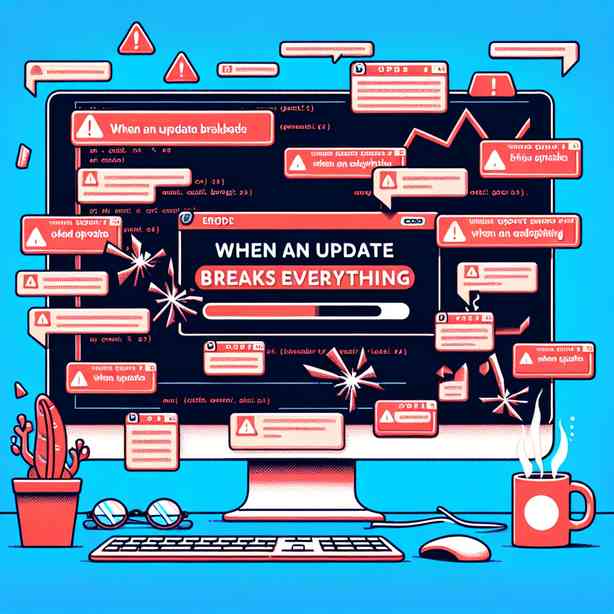
When updates break everything, it can feel like the world is crumbling around you, especially if you’re in the middle of an important project or trying to navigate through your daily tasks. Updates are generally intended to enhance functionality, introduce new features, and improve security. However, there are times when an update can inadvertently break existing features or create new issues. This situation often arises in software development, operating systems, applications, and even in website functionalities. Understanding the challenges posed by updates is crucial for better management of technology in our lives.
The process of updating software is multifaceted. Developers work tirelessly to create new iterations of their products, integrating user feedback, fixing bugs, and implementing advanced features. The integration of code from various sources can sometimes lead to unforeseen conflicts. An update may include new code that interacts poorly with the existing system, leading to a cascade of failures and unintended consequences. This phenomenon is often referred to as “regression,” where existing functionalities regress to a non-working state.
One of the main reasons updates break everything is the complexity inherent in software systems. Software is rarely a simple stack of elements. It typically consists of numerous layers of code, libraries, dependencies, and third-party integrations. Each update may introduce changes that inadvertently affect various parts of the system. This intricate web of interactions can turn updating from a straightforward process into a labyrinthine challenge. Therefore, before an update is released, thorough testing and quality assurance become crucial steps, yet even these can sometimes overlook certain edge cases.
Not only does this challenge affect individual users but it also poses significant risks for businesses. In the corporate environment, a critical update that breaks existing software can lead to downtime, financial loss, and, at times, irreparable damage to company reputation. For instance, a financial software update that disrupts transaction processing can have dire consequences for both the business and its customers. Thus, organizations often opt for a cautious approach to updates, implementing them during off-peak hours or in controlled environments to minimize risks.
It’s also important to realize that the impact of updates isn’t limited to functionality. Often, these updates come with new features that might require users to adjust their workflows or relearn certain processes. For example, imagine a widely-used collaboration tool suddenly changing its interface or features. Users may experience frustration as they attempt to navigate these changes, further compounding the chaos that can arise from an update. This situation emphasizes the need for user training, documentation, and communication surrounding updates to facilitate smooth transitions.
To mitigate the disruptive impact of updates, developers and teams are increasingly adopting strategies that emphasize better communication with users. Providing clear release notes, outlining what changes have been made and the expected impact, can help users prepare for updates. Additionally, rollbacks can be a vital part of a well-structured update strategy. If an update breaks something critical, the ability to revert back to a previous version minimizes disruption and allows for investigation into what went wrong.
Another useful approach is the practice of phased rollouts. Instead of pushing an update to all users simultaneously, companies may choose to release it to a smaller group first. This method enables developers to gather feedback and identify issues before a full-scale launch. Moreover, employing user feedback loops throughout the development and deployment phases can foster a more responsive approach to software enhancement, reducing the likelihood of breaking existing functionality.
Furthermore, utilizing automated testing and continuous integration tools can greatly assist in ensuring that updates do not break existing systems. Automated tests can simulate various user scenarios, verifying that new changes do not interfere with the expected functionalities. By integrating these practices into the development pipeline, teams can catch problems early, before an update reaches users.
As technology continues to evolve, updates will remain an integral aspect of software development, and the challenge of ensuring stability while delivering innovation will persist. Understanding the intricacies of software updates equips users and developers alike to handle situations when, inevitably, an update breaks everything. Cultivating a proactive mindset towards updates—anticipating potential pitfalls, communicating effectively, and employing rigorous testing—can help minimize the disruptions that may arise.
In conclusion, when an update breaks everything, it can serve as a reminder of the delicate balance between innovation and stability in technology. Though frustrating, these experiences offer valuable lessons in the importance of thorough testing, user communication, and iterative feedback loops. By acknowledging the potential risks associated with updates and adopting strategies to mitigate their fallout, we can navigate the complexities of technology with greater confidence. Whether you are a developer, business owner, or end-user, embracing these insights can lead to a more resilient and adaptable approach to the ever-evolving digital landscape.


